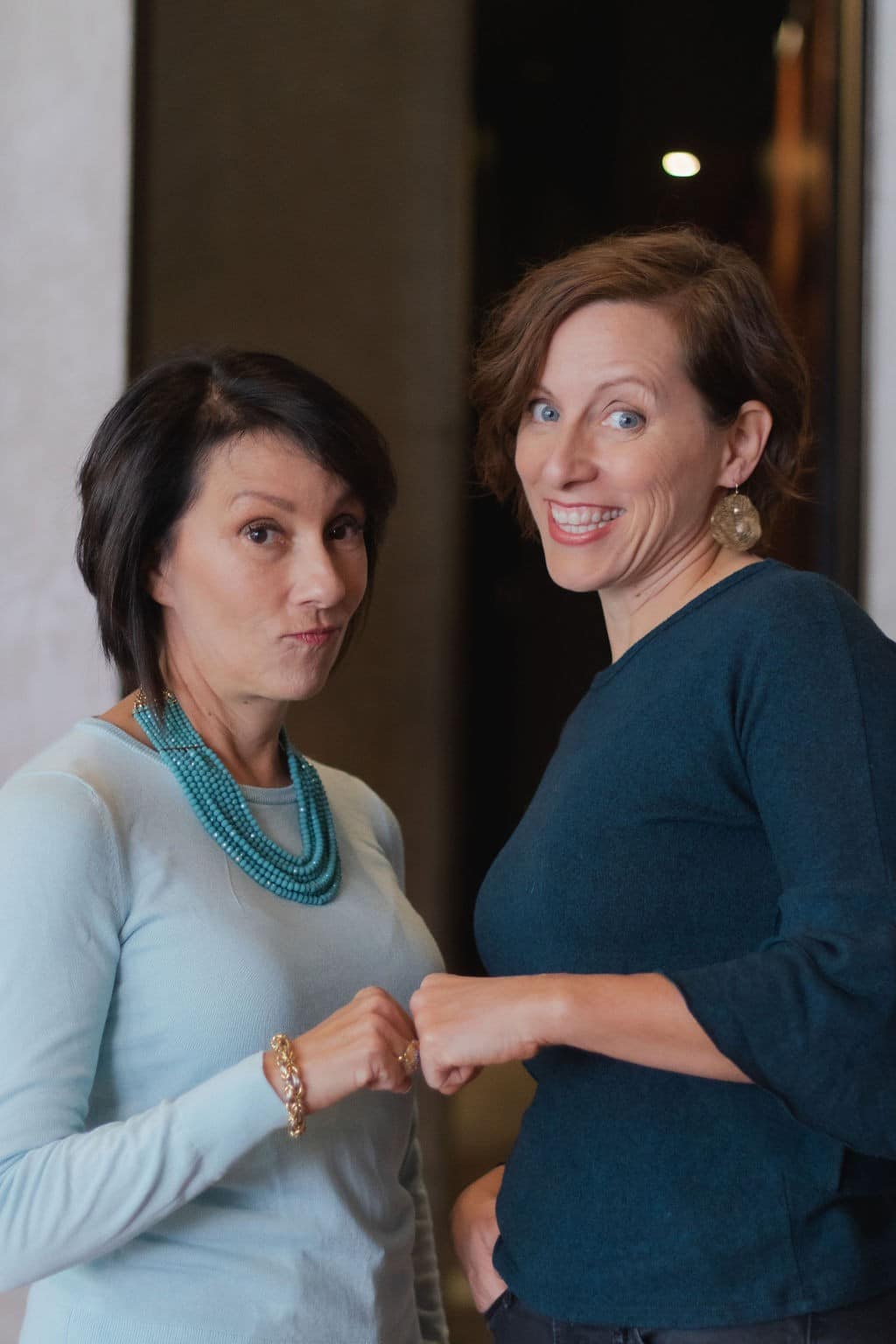Now that we’ve already talked about how individual personalities affect trust in teams, let’s dive into group dynamics: it’s not just about who we are; it’s about how we all work together. Questions like, “Are we handling conflicts well?” and “Are we motivating and delegating tasks effectively?” become super important. Team spirit and results don’t just depend on individual personalities; they’re shaped by how we interact as a whole.
[ez-toc]This article is part of a four-piece series by Brilliant People‘s Founder & CEO Whitney Nelson, and the Director of Content & Communications Brettnē Shootman. Check out the other content for complementary info!
Group Dynamics 101: 5 Tips to Get Things Moving
Collaboration results from practice and commitment, Top to Bottom. Collaboration should be woven into everything we do, not just something we mention now and then. It’s not about using it as a buzzword – it’s about making it part of the company’s everyday culture. As a bonus, here are some ideas on how to put this into practice:
#1 Video: Bringing Us Closer
In our virtual world, video meetings are the go-to, but not everyone’s a fan. Encouraging all team members to use video can help bridge the gap. Seeing each other’s faces helps us feel more connected, which is essential for building trust. This is especially true for distributed teams.
#2 Virtual Coffee Chats: Getting Personal
If in-person meetups aren’t an option, there are still ways to build connections. Consider setting aside time for virtual coffee breaks. These sessions give team members a chance to chat about more than just work and get to know colleagues on a personal level. Just like they would around the office coffee machine.
#3 Speed Mentoring: Quick Bonds
For a more structured approach, think of something like speed mentoring. Imagine a virtual event where team members get paired up for short chats. These quick interactions can be surprisingly good at building connections. It’s a chance for people from different teams to share their experiences, get to know each other better, and get advice and support when they need it.
#4 Breaking Down Barriers
In some organizations, especially those with outsourced or third-party teams, barriers can form unintentionally. Visual cues or labels like “contractor” can create divisions that hurt trust. Instead, think about ways to be more inclusive, like giving different access levels to certain platforms, so we can keep things secure while promoting collaboration at the same time.
#5 Equality and Inclusivity
In a remote or distributed work setup, it’s vital that all team members get the same treatment and benefits, no matter where they are or how they’re employed. We might not achieve perfect equality, but providing similar perks like branded goods, gym memberships, or wellness programs can help everyone feel included and trusted.
Sounds exciting, doesn’t it? For actionable advice on how to implement this, check out our Enhancing Team Collaboration with Shared Memories article. Don’t forget to reach out to Ubiminds to reach a tailored solution to continuously improve your group dynamics.
Things You Should Also Know
1. What is Kurt Lewin’s Theory of Group Dynamics?
Kurt Lewin’s theory emphasizes that group behavior is influenced by various forces. He introduces three concepts to explain how groups adapt to new circumstances:
- Unfreezing is the first stage of Kurt Lewin’s theory, involving breaking down existing structures and beliefs within a group. For instance: introducing a new project management tool that disrupts established workflows, prompting the team to reconsider their approach.
- Changing is the stage where new ideas, processes, or behaviors are introduced and implemented within the group. A usual example would be the transitioning from a traditional development methodology to Agile practices, requiring a shift in collaboration and task management.
- Refreezing is the final stage where the group solidifies the new structures, norms, or behaviors as the new status quo. In software companies, we can think of when teams successfully adopt DevOps practices. It then becomes the new standard, integrating continuous integration and deployment into their routine.
2. What Are the 4 Dimensions of Group Dynamics?
The four dimensions include communication, structure, process, and individual roles. These aspects shape how a group operates, communicates, and achieves its objectives, namely through:
- Communication: The exchange of information and ideas within a group, influencing collaboration and decision-making.
- Roles and Norms: The assigned functions and established rules within a group, shaping individual contributions and behavior.
- Power and Influence: The distribution of authority and ability to impact decisions, affecting leadership dynamics within the group.
- Trust and Cohesion: The development of reliability and solidarity among group members, fostering a positive and collaborative environment.
3. How do They Most Often Present in Software Companies?
In software companies, these dimensions manifest through collaborative tools, team structures, development processes, and the roles individuals play. Effective navigation of these dynamics is crucial for successful teamwork in the software industry.
Positive Manifestations in Software Companies
- Enhanced Innovation: Effective group dynamics encourage diverse perspectives, leading to innovative solutions to complex problems.
- Optimized Collaboration: Clear communication and established roles foster seamless collaboration among team members, resulting in efficient project execution.
- Agile Adaptation: Trust and cohesion enable teams to adapt quickly to changes, crucial in the dynamic landscape of software development.
Negative Manifestations in Software Companies:
- Communication Breakdowns: Poor communication can lead to misunderstandings, delays, and reduced productivity in software projects.
- Role Conflicts: Ambiguity or conflicts in assigned roles may hinder the development process, causing confusion and inefficiencies.
- Power Struggles: Unresolved power dynamics can create tensions, potentially impacting decision-making and overall team morale.
By embracing the principles of group dynamics, software companies can foster an environment that not only meets project goals but also nurtures the growth and well-being of individual team members. As the industry continues to evolve, mastering the art of group dynamics will undoubtedly remain a cornerstone for sustained success and innovation in software development.

Brettnē began her career in public education; teaching students, writing district-wide curriculum, and facilitating Covey training for educators. She has since created curriculum for private schools and nonprofits.
Whitney Nelson is the founder and CEO of Brilliant People™. She’s a dynamic leader with a background in design, marketing, leading teams and leadership development.


